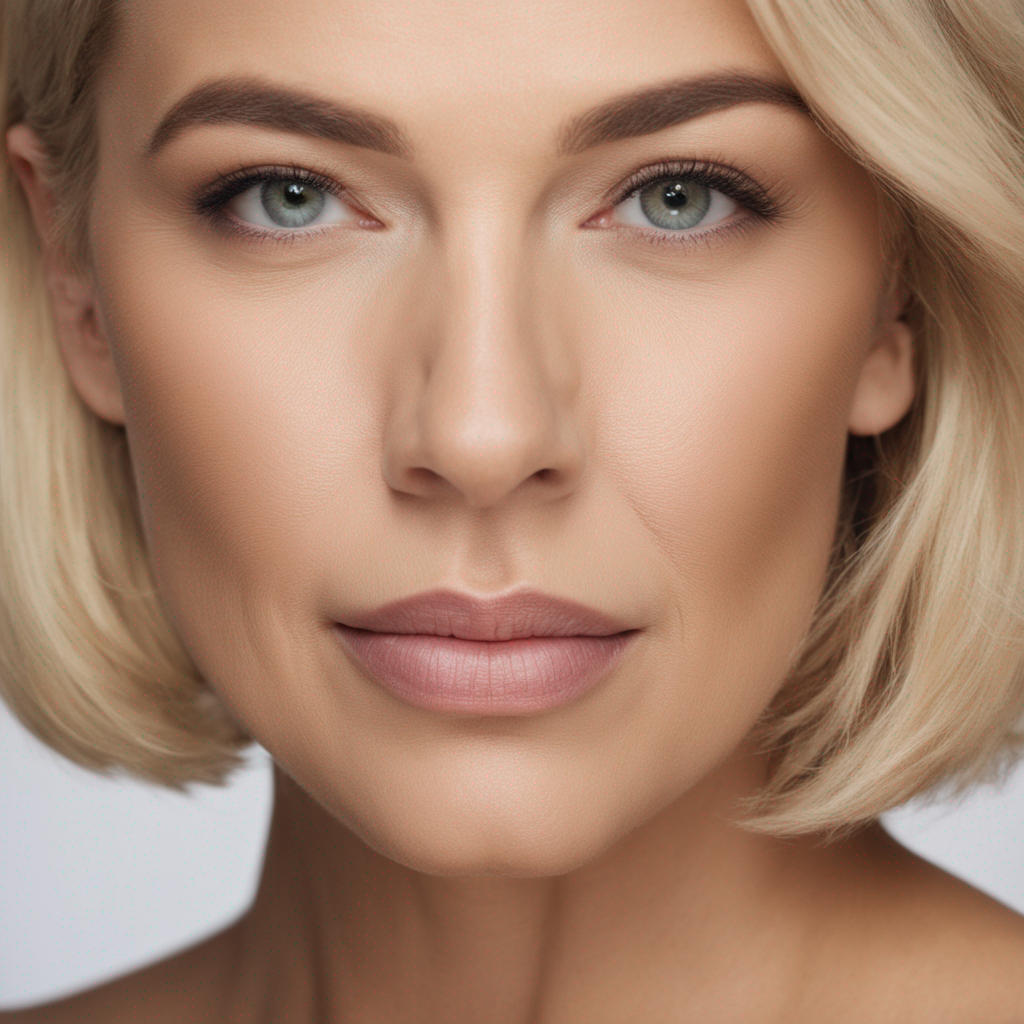Understanding Dermabrasion Benefits
Fine Lines
Dermabrasion stands out for its effectiveness in reducing fine lines. This technique gently removes the top layers of skin. It makes way for smoother, fresher looking skin underneath.
Patients often notice a significant decrease in the appearance of fine lines around the mouth and eyes. This results in a more youthful look.
Skin Renewal
Another key benefit is how dermabrasion promotes new, healthier skin layers. By removing damaged skin cells, this procedure encourages the body to produce new ones.
This process not only revitalizes the skin’s appearance but also improves its overall health. Patients report their skin feeling softer and more vibrant after treatment.
Tone and Texture
Improvement in skin tone and texture is a major advantage of dermabrasion. Uneven pigmentation and rough patches can be effectively treated with this method.
Patients enjoy a more even complexion and smoother skin texture. These changes contribute to an enhanced sense of confidence and well-being.
Enhancing Skin Texture and Appearance
Skin Renewal
Dermabrasion works by removing the damaged outer layers of the skin. This process reveals smoother, more radiant skin that was previously hidden beneath. It’s akin to shedding an old layer for a fresh start.
Patients often notice their new skin feels softer and looks brighter than before. The technique is especially effective on the face, where signs of aging or sun damage are most visible.
Pigmentation Correction
One of dermabrasion’s key benefits is its ability to even out skin pigmentation. Age spots and other forms of pigmentation can make the skin appear uneven and older.
Through careful removal of the top layers, dermabrasion reduces these blemishes. The result is a more uniform skin tone that enhances one’s overall appearance.
Appearance Enhancement
Post-treatment, patients observe a significant improvement in their skin’s appearance. Not only does dermabrasion tackle wrinkles and fine lines, but it also brightens the overall look of the face.
The healing process encourages the production of new, healthy skin cells. This leads to an increase in luminosity and a youthful glow that many desire.
Addressing Acne Scars Effectively
Scar Diminishment
Dermabrasion stands out for its effectiveness in reducing the visibility of acne scars. This technique uses a specialized tool to carefully remove the top layers of skin, promoting new, smoother skin to form. It’s particularly adept at treating certain types of scars.
Acne scars vary in depth and appearance. Dermabrasion excels with shallow, surface-level marks rather than deep, pitted scars. Patients often see a significant improvement in their skin’s texture after treatment.
Confidence Boost
The reduction of acne scars can lead to improved skin confidence. For many, acne and its residual scarring are sources of self-consciousness. By diminishing these marks, dermabrasion helps individuals feel more comfortable and confident in their own skin.
This boost in confidence is not just superficial. It can impact various aspects of one’s life, from social interactions to personal relationships. The psychological benefits of feeling good about one’s appearance cannot be overstated.
Risks Associated with Dermabrasion
Common Side Effects
Dermabrasion, while effective for acne scars, brings certain risks. Patients often experience redness and swelling post-treatment. These effects are usually temporary but can cause discomfort.
Sensitivity to sunlight is another common side effect. It necessitates diligent use of sunscreen to protect the newly exposed skin layer.
Serious Risks
Though less common, serious complications can occur. Infections may arise if the treated area isn’t properly cared for. This can lead to prolonged healing times and discomfort.
Scarring, though dermabrasion aims to reduce it, can ironically be a risk as well. Especially if the skin doesn’t heal correctly or the procedure was too aggressive.
Choosing a Professional
The importance of selecting a qualified professional cannot be overstated. They minimize risks by using sterile equipment and following best practices.
A skilled practitioner will also assess your skin type and medical history. This ensures dermabrasion is a safe option for you.
Potential Complications Post-Procedure
Side Effects
After undergoing dermabrasion, patients often experience temporary side effects. These can include redness and swelling in the treated area. It’s crucial to understand that these reactions are part of the healing process.
Patients typically notice a significant reduction in these symptoms within a few days post-procedure. However, complete healing can take up to several weeks.
Care Instructions
Following post-procedure care instructions is essential for a smooth recovery. Neglecting these guidelines may lead to complications such as infections or prolonged redness and swelling.
Doctors provide detailed care instructions tailored to each patient’s needs. Adhering to these recommendations significantly reduces the risk of adverse outcomes.
Skin Coloration
Changes in skin coloration are possible after dermabrasion. Some patients might experience lighter or darker skin tones in the treated areas.
To minimize risks, avoiding direct sunlight and applying sunscreen diligently is advised. Proper sun protection helps prevent permanent changes in skin pigmentation.
Making an Informed Decision
Consult Dermatologist
Before deciding on dermabrasion, it’s crucial to consult with a dermatologist. They can assess if it’s the right choice for your skin type and concerns.
They understand your skin’s history and how it might react to such a procedure. Their expertise helps in weighing the benefits against potential risks.
Skin Goals
Think about what you want to achieve with your skin. Dermabrasion can improve texture, reduce scars, and even out skin tone.
However, results vary based on age, skin type, and the area treated. It’s important to have realistic expectations and understand that results take time.
Choose Practitioner
Selecting an experienced practitioner is key for the best outcomes. Research their qualifications and track record.
Ask for before-and-after photos of previous patients. This step ensures you’re in safe hands and increases the likelihood of satisfactory results.
Weigh Costs
Dermabrasion is not a low-cost option. Prices vary depending on the practitioner’s experience and the size of the area being treated.
Consider this investment carefully, especially since multiple sessions may be needed for optimal results.
Understand Risks
Every procedure has risks. For dermabrasion, these include infection, changes in skin color, or scarring.
Knowing these ahead of time allows for informed decision-making. It also prepares you for any necessary post-procedure care at home.
Suitable Candidates for the Treatment
Ideal Profiles
People with light skin tones often find themselves as ideal candidates for dermabrasion. Their lower risk of hyperpigmentation post-treatment makes them better suited for this procedure. It’s crucial, however, that these individuals maintain realistic expectations about the outcomes.
They should also enjoy good overall health. This condition minimizes risks associated with recovery and enhances the healing process.

Health Considerations
Persons suffering from certain skin conditions or those experiencing active acne outbreaks might need to reconsider. These conditions can complicate the treatment process and may result in unsatisfactory outcomes.
It’s essential to consult a doctor or a surgeon before deciding on dermabrasion. They can provide valuable insights based on one’s specific health status and skin type.
Expectation Management
Having realistic expectations is paramount. Dermabrasion offers significant improvements but it’s not a cure-all solution.
Candidates should discuss their goals with their surgeon to ensure alignment. This clarity helps in setting achievable targets for the treatment’s outcome.
Comparing Dermabrasion to Other Methods
Effectiveness and Recovery
Dermabrasion offers a deep exfoliation process, making it highly effective for treating scars and deep wrinkles. Its recovery time spans from two to six weeks, depending on the individual’s skin type and the extent of the procedure. In contrast, chemical peels have a quicker recovery period but may require multiple sessions to match dermabrasion’s effectiveness. Laser treatments, while precise, can lead to longer recovery times for deeper procedures.
Laser options might seem appealing due to their precision and reduced risk of infection. However, they often come with a heftier price tag and potentially longer downtimes for extensive treatments.
Skin Suitability
Dermabrasion is particularly beneficial for those with fairer skin tones, as it minimizes the risk of post-treatment pigmentation changes. Microdermabrasion, its less invasive counterpart, suits all skin types but offers more superficial results. It gently removes the skin’s outer layer without needing downtime, making it a safer option for darker skin tones.
Microdermabrasion serves as an excellent alternative for individuals seeking mild improvements without significant downtime.
Cost Comparison
The cost of dermabrasion typically exceeds that of non-surgical alternatives like microdermabrasion or topical treatments due to its in-depth nature and requirement for professional dermatologist oversight. While non-surgical methods offer a lower upfront cost, they may necessitate ongoing treatments to maintain results, potentially increasing the overall expense.
Non-surgical alternatives can be more budget-friendly but might not provide the dramatic results some patients seek.
Summary
Dermabrasion offers a promising path for those seeking to improve their skin’s texture, address acne scars, and achieve a more youthful appearance. However, it’s essential to weigh the benefits against potential risks and complications. Armed with knowledge about what dermabrasion involves, how it compares to other methods, and understanding who makes a suitable candidate, you’re in a strong position to make an informed decision about your skincare journey. Remember, every treatment has its pros and cons, and what works best depends on individual needs and conditions.
Before jumping into any treatment, consult with a skincare professional who can provide tailored advice based on your unique skin type and concerns. Taking this step ensures you embark on a treatment plan that’s both safe and effective for you. Ready to transform your skin? Reach out to a dermatologist today and explore if dermabrasion is your ticket to clearer, smoother skin. Your journey to revitalized skin starts with that first step.
Frequently Asked Questions
What are the main benefits of dermabrasion?
Dermabrasion significantly improves skin texture and appearance, effectively reducing fine lines, wrinkles, and acne scars. It offers a smoother, more youthful complexion.
How does dermabrasion address acne scars?
Dermabrasion removes the outer layers of skin, minimizing the depth of acne scars and promoting smoother skin regeneration.
What risks are associated with dermabrasion?
Common risks include redness, swelling, and changes in skin color. More serious complications can occur but are less common.
Are there any potential complications after a dermabrasion procedure?
Yes, potential complications include infection, scarring, and uneven skin tone. Choosing an experienced professional can minimize these risks.
How do I know if I’m a suitable candidate for dermabrasion?
Suitable candidates are generally those looking to improve skin texture or reduce the appearance of scars without active skin infections or certain health conditions. A consultation with a dermatologist is essential.
How does dermabrasion compare to other resurfacing methods?
Dermabrasion is more invasive than microdermabrasion but can offer more dramatic results. It’s different from chemical peels and laser treatments in terms of recovery time and how it affects the skin.
Is making an informed decision about dermabrasion important?
Absolutely. Understanding the benefits, risks, and your suitability for the treatment ensures you make a well-informed decision that aligns with your skincare goals.





